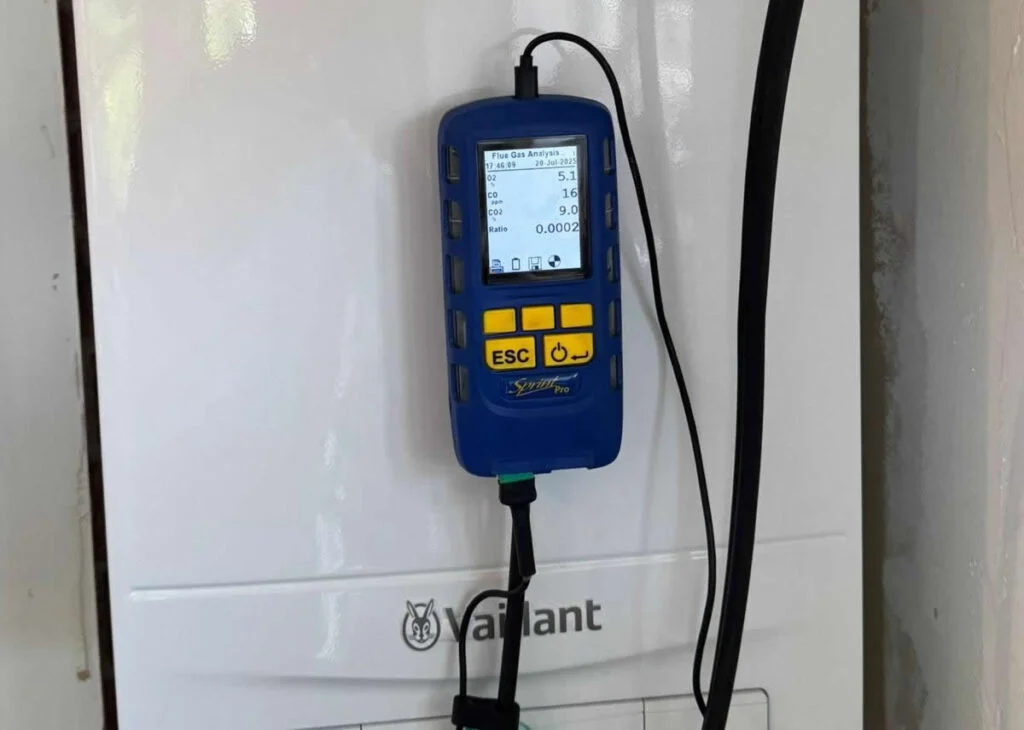Why Does Boiler Pressure Loss Happen? Causes & Fixes in Kent
Boiler pressure loss can creep up unexpectedly — leaving you with cold radiators, lukewarm water, and a frustrating disruption at home. If you’re a homeowner in Swanley, Dartford, Orpington, Bexley, or anywhere across Kent, this guide will help you understand why boiler pressure drops, what it means, and how DAKS Plumbing can fix it quickly.
What Causes Boiler Pressure Loss?
Understanding the root of the problem is the first step to fixing it.
1. Leaky Valves or Pipes
A common culprit is hidden leakage. Even a small drip around radiators, joints, or beneath the boiler can reduce pressure. If you notice puddles, call our leak detection experts in Swanley — we use advanced tools to find and fix issues fast.
2. Internal Plumbing Issues
Airlocks, worn-out pressure valves, or corrosion can imbalance your system. For peace of mind, book our detailed plumbing inspections for homebuyers and landlords.
3. An Overloaded or Aging Boiler
Old or overworked boilers often struggle to hold safe pressure. Our heating specialists in Kent can service or replace your boiler with a more efficient model.

How to Repressurise a Boiler – Step-by-Step
If your radiators are cold or your heating has stopped, low boiler pressure is a likely cause. Most sealed systems rely on stable water pressure to work correctly. Fortunately, repressurising a boiler is often a simple DIY task.
What is Boiler Pressure?
Boiler pressure is the water pressure inside your heating system. It’s measured in bar using the gauge on the front of your boiler. The correct level is usually between 1.0 and 1.5 bar when cold.
Why Does Boiler Pressure Drop?
- Small leaks in the system
- Bleeding radiators
- A faulty pressure relief valve
- Normal wear and tear
How to Check Boiler Pressure
- Locate the gauge on the boiler or control panel.
- Read the gauge:
- Below 1.0 bar: too low, repressurise needed.
- Between 1.0–1.5 bar: ideal range.
- Over 2.5 bar: too high, call an engineer.
How to Repressurise Your Boiler
Tip: Always check your boiler’s manual for exact instructions.
Method 1 – External Filling Loop
- Switch off the boiler and allow it to cool.
- Find the silver braided filling hose beneath the boiler.
- Open both valves slowly until pressure reaches 1.3–1.5 bar.
- Close both valves fully to avoid overfilling.
- Restart the boiler and check it runs smoothly.
Method 2 – Keyless Filling Link
- Turn off the boiler.
- Move the filling lever or switch into the open position.
- Watch the gauge rise to the correct level.
- Return the lever to the closed position.
- Restart the boiler.
Safety Tips
- Never exceed 2.5 bar – it can damage the system.
- If pressure drops repeatedly, call a professional.
- Always follow your manufacturer’s guidance.
Boiler Maintenance in Kent
Routine care prevents boiler pressure loss. We recommend:
- Bleeding radiators once a year
- Checking the gauge monthly
- Annual servicing with DAKS Plumbing in Kent
Areas We Cover
We handle boiler pressure loss repairs in: Swanley, Dartford, Orpington, Sidcup, Bexley, Eynsford, Farningham, West Kingsdown, Crockenhill, and all surrounding Kent areas.
Contact DAKS Plumbing
📞 Call us today to book a heating engineer
💬 Message us on WhatsApp for quick advice
🛠️ We also provide drainage and blockage services, alongside boiler repairs and full plumbing support.
FAQs – Boiler Pressure Loss
How often should I check boiler pressure?
Once a month is ideal. This helps catch early signs of leaks or valve issues.
Can I fix boiler pressure loss myself?
Yes, repressurising is usually safe and simple. But if pressure keeps dropping, call a Gas Safe engineer.
Does boiler pressure affect heating bills?
Yes. Low pressure makes boilers run inefficiently, increasing energy costs.
